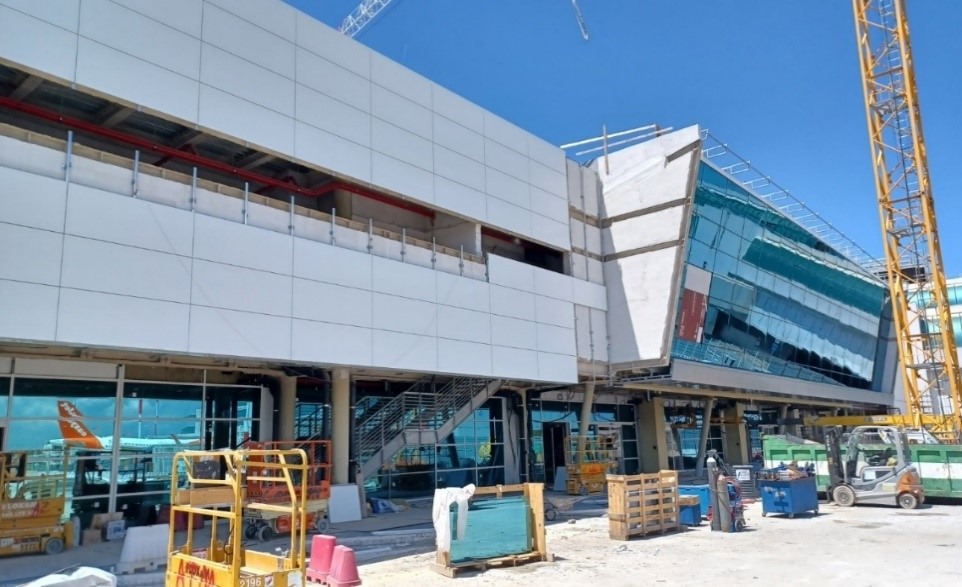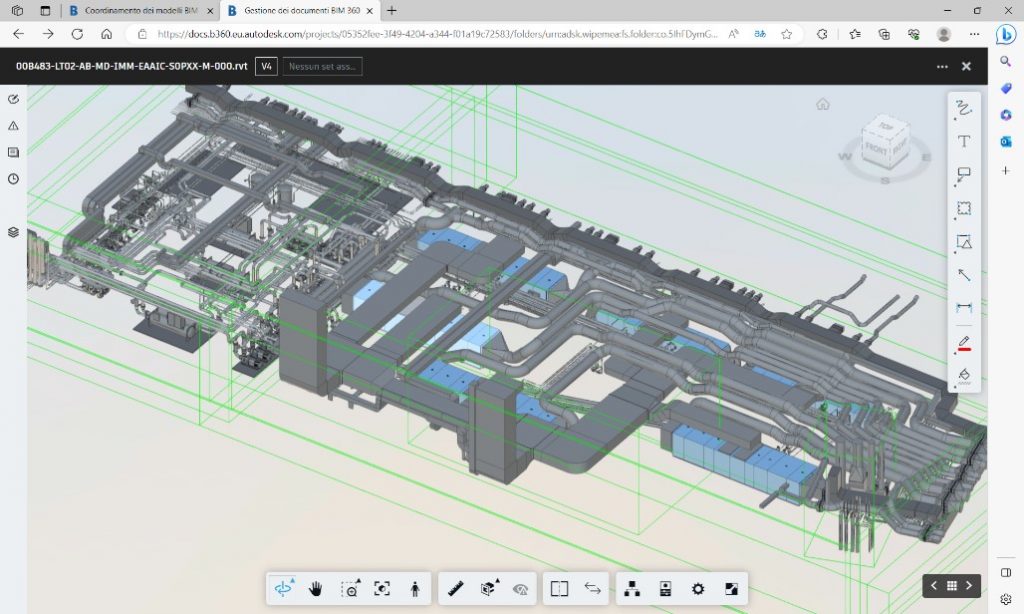AUTHOR: Arch. Luca Giani
TUTORS: Ing. Giovanni Franchi
MASTER: Master in “Project Management in construction works with BIM” a.a 2021/2022
Lo scopo della tesi di Master è quello di analizzare attraverso il caso studio quale sia la metodologia migliore di Project Management per la gestione di un appalto in ambito aeroportuale.
Una volta illustrati i 12 principi del Project Management, il ciclo di vita di un progetto e le responsabilità del Project Manager, si sono approfondite le due metodologie di Waterfall e Agile Management per capirne i punti di forza e debolezza.
La metodologia Waterfall è la più semplice perché si basa sul principio di completamento di tutte le attività di ogni fase in maniera sequenziale: non si inizia l’attività successiva fin quando non è conclusa quella precedente. In sintesi, la filosofia è quella di ottenere il miglior risultato possibile con la minor spesa di soldi, tempo e manodopera, motivo per cui non sono previsti cambiamenti al progetto una volta definito, pertanto, la fase di pianificazione dovrà essere molto accurata quindi i requisiti devono essere individuati in maniera chiara e precisa dal principio.
La metodologia Agile è quella più flessibile nasce infatti dall’esigenza delle aziende di avere un metodo più veloce e più efficiente per ottenere i propri prodotti e raggiungere risultati migliori e che fosse capace di rispondere al problema dell’inflessibilità della metodologia Waterfall. Alla base c’è l’idea di dividere il progetto in brevi cicli di iterazione, chiamati sprint, che permettono di velocizzare la fase di sviluppo e di test e di effettuare eventuali modifiche e aggiornamenti al progetto in seguito allo svolgimento di revisioni a ogni conclusione del ciclo svolte con i membri del team e i clienti finali entrambi presenti, ottenendo così una metodologia che ha come caratteristica principale quella dell’agilità.
L’intervento oggetto del caso Studio è l’appalto denominato “Lotto 2 – Realizzazione NID (Nodo Imbarchi D) e Riqualifica AIC (Area Imbarchi C)” all’interno dell’Aeroporto Leonardo da Vinci di Fiumicino. Aeroporti di Roma S.p.a. (ADR) ha la concessione per la gestione degli scali di Fiumicino e Ciampino attraverso l’accordo di programma con ENAC (Ente Nazionale Aviazione Civile). Il sottoscritto svolge il ruolo di Project Manager all’interno della Business Unit Infrastructures, l’unità di ADR individuata per la realizzazione e la ristrutturazione di tutti gli interventi infrastrutturali dei due scali.
Una volta descritta l’opera da eseguire, il Team di progetto e gli Steakholders coinvolti, catalogati per interesse, sono state rappresentate le fasi di pianificazione e progettazione che hanno portato alla redazione del progetto esecutivo e alla stipula del contratto per un importo totale di circa 40 milioni di euro. Già in queste fasi si sono portati degli esempi pratici che hanno sottolineato come la complessità nel pianificare un lavoro è ancora più accentuata nel mondo aeroportuale dove gli scenari sono in continua evoluzione. Tali evoluzioni sono nella maggior parte dei casi di difficile prevedibilità, e per progetti ed interventi significativi, che richiedono una progettazione da sviluppare nel corso di un lungo periodo di tempo, creano spesso delle ricadute importanti proprio sui tempi e conseguenti costi.
Una volta consegnati i lavori si sono viste le evoluzioni del diagramma di Gantt e della curva ad S durante tutta l’attività di esecuzione dell’opera. Anche qui sono stati portati esempi pratici di come l’evoluzione del cantiere non ha seguito quanto inizialmente pianificato. In una azienda ampia e complessa come ADR convivono esigenze e obiettivi di diversi gruppi specializzati nel proprio settore, il lavoro di recepimento e indirizzamento di tali modifiche è sempre molto impegnativo. Ogni Steakholder ha le proprie richieste che devono essere valutate e, nel caso debbano essere recepite, vanno coordinate per tempo. Spesso prima di “ordinare” una modifica va prima analizzata con gli altri Steakholder che impatto possa avere sul ruolo o sul percorso di un altro. In questo contesto, già di difficile gestione e programmazione, tale appalto si è incontrato con la pandemia da COVID-19. Oltre a tutti gli aspetti sociali che questa emergenza sanitaria ha portato, il settore aereo ha subito un fermo senza precedenti e di riflesso anche lo scalo internazionale di Roma Fiumicino ne ha patito gli effetti: passeggeri transitanti in calo di oltre 80% ed investimenti infrastrutturali sospesi.
Dopo un richiamo ai vantaggi dell’avere gli as-built in BIM, soprattutto ai fini manutentivi, si è concluso analizzando nuovamente le due metodologie succitate all’interno del campo dei grandi progetti e costruzioni, proponendo come miglior metodo quello integrato tra i due. Il metodo tradizionale, infatti, risulta necessario per progetti così lunghi che richiedono un GANTT che metta in sequenza tutti gli step del processo sia in fase di pianificazione/progettazione che in esecuzione, ma, dall’analisi delle variabili spesso non pianificabili nell’ambito di un aeroporto in continua evoluzione, nasce l’esigenza di introduzione della metodologia di Agile, leggera e flessibile, che rappresenta una valida alternativa ai metodi tradizionali, vista la sua grande capacità di adattamento alle modifiche.
Le considerazioni finali sono indirizzate a far comprendere che la differenza nella buona riuscita del progetto è proprio la scelta del Project Manager, che deve essere capace di stare dietro al progetto sotto ogni singolo aspetto e saper implementare la metodologia di lavoro migliore per ottenere il risultato più performante, guidando e supportando il team di progetto, senza il quale il successo sarebbe impossibile da raggiungere. E per arrivare a questo il PM non dovrà avere solo competenze tecniche specifiche, sicuramente necessarie anche per godere di credibilità verso il resto del Team, ma dovrà avere una visiona più ampia e applicare le proprie soft skills per il raggiungimento dell’obiettivo.
FOR INTERNATIONAL STUDENTS:
The purpose of the Master’s thesis is to analyze through the case study which is the best Project Management methodology for the management of a contract in the airport sector.
Once the 12 principles of Project Management, the life cycle of a project and the responsibilities of the Project Manager have been illustrated, the two methodologies of Waterfall and Agile Management have been explored to understand their strengths and weaknesses.
The Waterfall methodology is the simplest because it is based on the principle of completing all the activities of each phase in a sequential manner: the following activity is not started until the previous one has been completed. In summary, the philosophy is to obtain the best possible result with the least expenditure of money, time and manpower, which is why no changes are foreseen to the project once defined, therefore, the planning phase must be very accurate therefore the requirements must be identified clearly and precisely from the outset.
The Agile methodology is the most flexible one, in fact, born from the need of companies to have a faster and more efficient method to obtain their products and achieve better results and which was capable of responding to the problem of the inflexibility of the Waterfall methodology. At the base is the idea of dividing the project into short iteration cycles, called sprints, which allow to speed up the development and testing phase and to make any changes and updates to the project following the carrying out of revisions at each conclusion of the cycle carried out with team members and end customers both present, thus obtaining a methodology that has agility as its main characteristic.
The intervention object of the case study is the contract called “Lotto 2 – Realizzazione NID (Nodo Imbarchi D) e Riqualifica AIC (Area Imbarchi C)” within the Leonardo da Vinci airport of Fiumicino. Aeroporti di Roma S.p.a. (ADR) has the concession for the management of Fiumicino and Ciampino airports through the program agreement with ENAC (Italian Civil Aviation Authority). The undersigned performs the role of Project Manager within the Infrastructures Business Unit, the ADR unit identified for the construction and renovation of all infrastructural interventions at the two airports.
Once the work to be performed was described, the project team and the involved Steakholders, cataloged by interest, the planning and design phases were represented which led to the drafting of the executive project and the signing of the contract for a total amount of approx. 40 million euro. Already in these phases, practical examples have been brought which have underlined how the complexity of planning a job is even more accentuated in the airport world where the scenarios are constantly evolving. These evolutions are in most cases difficult to predict, and for significant projects and interventions, which require a planning to be developed over a long period of time, often create important repercussions precisely on times and consequent costs.
Once the works were delivered, the evolutions of the Gantt diagram and the S-curve were seen throughout the execution of the work. Here too practical examples were given of how the evolution of the construction site did not follow what was initially planned. In a large and complex company like ADR, the needs and objectives of different groups specialized in their sector coexist, the work of transposing and addressing these changes is always very demanding. Each Steakholder has his own requests which must be evaluated and, if they need to be implemented, they must be coordinated in time. Often, before “ordering” a change, it must first be analyzed with the other Steakholders what impact it may have on the role or on the path of another. In this context, already difficult to manage and plan, this project encountered the COVID-19 pandemic. In addition to all the social aspects that this health emergency has brought about, the airline sector has suffered an unprecedented standstill and consequently the international airport of Rome Fiumicino has also suffered the effects: transit passengers down by over 80% and infrastructural investments suspended .
After a reference to the advantages of having as-builts in BIM, especially for maintenance purposes, it was concluded by analyzing the two aforementioned methodologies again within the field of large projects and constructions, proposing the integrated method between the two as the best method. The traditional method, in fact, is necessary for such long projects that require a GANTT that puts in sequence all the steps of the process both in the planning/design phase and in execution, but from the analysis of the variables that often cannot be planned in the context of an airport in continuous evolution, the need arose to introduce the Agile methodology, light and flexible, which represents a valid alternative to traditional methods, given its great ability to adapt to changes.
The final considerations are aimed at making people understand that the difference in the success of the project is precisely the choice of the Project Manager, who must be able to keep up with the project in every single aspect and know how to implement the best working methodology to obtain the most performing, guiding and supporting the project team, without whom success would be impossible to achieve. And to get to this, the PM must not only have specific technical skills, certainly also necessary to enjoy credibility with the rest of the team, but must have a broader vision and apply their own soft skills to achieve the objective.


